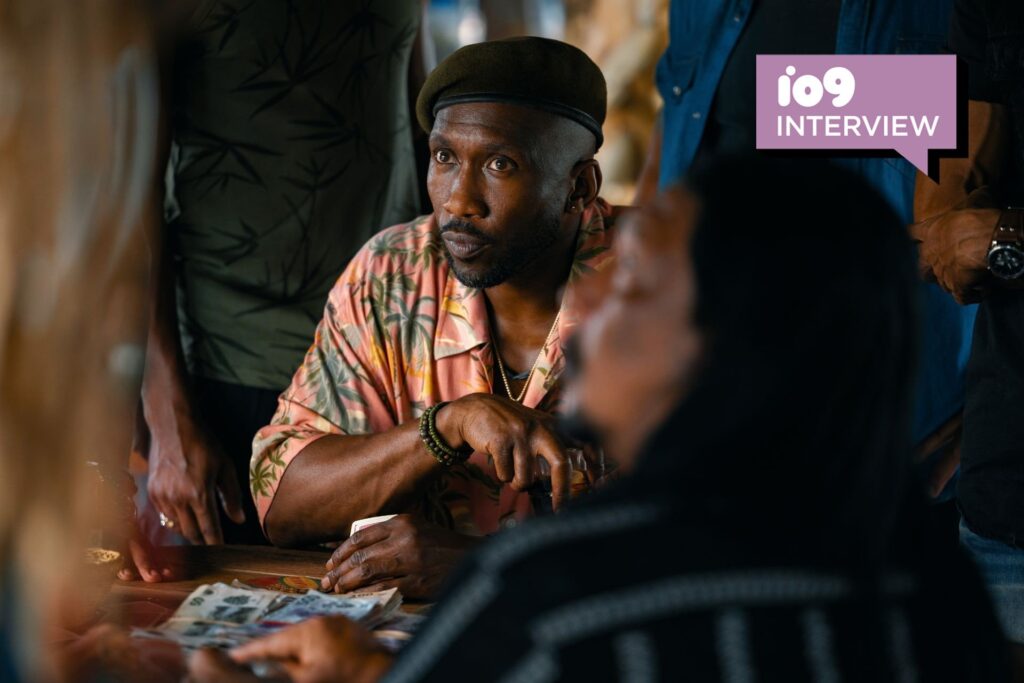Jurassic World Rebirth has roared into theaters, leaving audiences with a mix of satisfaction and surprise. The film, directed by Gareth Edwards, features a climactic moment that both fulfills and subverts expectations. At the heart of this is the character Duncan Kincaid, played by Mahershala Ali, whose fate was a rollercoaster of decisions behind the scenes.
In the film’s pivotal scene, Duncan appears to sacrifice himself to the fearsome D-Rex, allowing his companions to escape. It’s a moment of heroism that seems to seal his fate. However, a twist reveals his survival, marked by a red flare in the sky, turning what seemed like a foregone conclusion into a surprising reprieve. This turn of events was not always the plan, as Edwards revealed in an interview.
The Evolution of Duncan Kincaid’s Fate
According to Edwards, the original script had Duncan meeting his end. “There was a draft where he died,” Edwards shared, highlighting the initial intent for a character-driven sacrifice. Yet, the casting of Mahershala Ali, a two-time Oscar winner, prompted a reconsideration. “As we pursued Mahershala, I think they felt like, ‘Well, this is a big deal actor. We would want him to hang around,’” Edwards explained.
Despite the initial change to keep Duncan alive, both Edwards and Ali advocated for the character’s death, aligning with the story’s emotional core. “Me and him sort of fought for that, and we got our way,” Edwards said. The decision was reversed once more, however, due to logistical constraints during filming in Thailand.
Studio Decisions and Creative Compromises
Universal Studios, facing time constraints, instructed Edwards to capture footage that could imply Duncan’s survival without additional reshoots. “Just get something while you’re out in Thailand that can cover for the fact if he lived,” Edwards recalled being told. This directive led to the creation of the scene that ultimately made it into the final cut.
Edwards described how he crafted a version of Duncan’s survival that he grew to appreciate. “I tried to picture something, and then I started to fall in love with it,” he said. The resulting scene, shot with enthusiasm and executed with strong performances, became a highlight of the film.
The Unexpected Impact on Audiences
Reflecting on the audience’s reaction, Edwards noted the effectiveness of the twist. “I think the audience subconsciously has learned he’s a goner,” he observed. The surprise of Duncan’s return, marked by the flare, elicited cheers and applause at the film’s premiere. “It was this big cheer and clap,” Edwards recounted, describing the emotional response as a gratifying moment.
“I’m glad the studio told us to shoot that little extra piece,” Edwards concluded, acknowledging the studio’s role in shaping the film’s final narrative.
Implications for Future Storytelling
The journey of Duncan Kincaid’s character in Jurassic World Rebirth underscores the dynamic interplay between creative vision and studio influence. It also highlights the impact of casting decisions on narrative outcomes. As filmmakers navigate these complexities, the film serves as a reminder of the power of storytelling to surprise and engage audiences, even when the path to the final product is as winding as a prehistoric jungle.
With Jurassic World Rebirth now captivating audiences worldwide, the story behind its creation adds an intriguing layer to the cinematic experience, inviting viewers to consider the intricate decisions that shape the stories they love.
